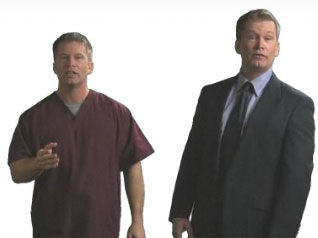 Video email marketing campaigns can be much more complex than meets the eye. In fact, they should be. Like traditional email marketing, your video marketing campaign should build on itself, ultimately leading to a desired action. This involves much more planning than simply pointing to an existing website video in your newsletter. Below are a few tips to ensure that your campaign informs, guides, and delivers.
Video email marketing campaigns can be much more complex than meets the eye. In fact, they should be. Like traditional email marketing, your video marketing campaign should build on itself, ultimately leading to a desired action. This involves much more planning than simply pointing to an existing website video in your newsletter. Below are a few tips to ensure that your campaign informs, guides, and delivers.
What Do You Want to Accomplish with Video Email Marketing?
Start by considering what you want to accomplish with your email marketing campaign along with how your subscribers initially found you. Let’s say that you sell kitchen remodeling services. You ultimately want subscribers to pick up the telephone and call you for an in-home consultation so that you have the opportunity to bid on their remodeling projects, right? Before you start sending videos of your work and asking for a consultation, you need to also consider why your subscribers opted into your list and then tailor your video email marketing campaign to satisfy those users. You need to earn their trust and deliver on your promises.
For example, if your subscribers joined your list in order to download a free report about environmentally friendly building materials, it would make sense for your email campaign to feature a website video that showcases some of the most innovative eco-friendly building products available. Since you know that these subscribers are sensitive about the environment, your email marketing campaign could continue to build your credibility as a “green” remodeler. After sending a website video on building materials, your next message might discuss Energy Star appliances or the benefits of using trash compactors and composters.
Create an Entire Video Email Marketing Series Leading to Your Goal
Now that you have a goal in mind and understand what your subscribers are interested in, brainstorm at least five ideas for your video email marketing campaign. In this example, you might want to discuss green building materials, Energy Star appliances, composting tips, innovative kitchen faucets that conserve water or heat it instantly, and energy-efficient kitchen skylights.
Now that you know the topics, it’s time to produce a website video for each message in your campaign highlighting those topics. By including a website video in your email marketing messages, not only are you providing your subscribers with valuable information that they are interested in, you are redirecting them back to your website where you’ll have additional opportunities to make your case. Do this each week and your subscribers will become more comfortable with you and recognize your expertise in the topic. Who do you think they will call when it comes time to remodel their kitchens? The expert that has continually demonstrated expertise green kitchen remodeling topics – you!
Create a Call to Action
While it may seem like you’re the obvious choice thanks to your video and email marketing strategy, many prospects need to be reminded to call you. Make sure that your video email marketing campaign and website video series ends with a compelling call to action. This goes back to step one where you defined what you want to accomplish. In this example, you want the prospect to call and schedule a consultation. Make it easy for your prospects to do this by including your specific call to action such as, “Call 1-800-xxx-xxxx to schedule a free, in-home kitchen remodeling consultation.”
No matter what product or service your business offers, a well-planned video email marketing campaign can build trust, reinforce your area of expertise, and send prospects back to your website to watch a website video on the topic. Create an email marketing series with a specific goal and ask your prospects to take action.
What do you think about planning a video email marketing campaign in advance? Share your thoughts in the comments section below:














 Testimonial video production starts long before the cameras start rolling. First, you need a willing client to appear in the customer testimonial video. Next, you need to plan the entire shoot from location to what the client will actually say during filming. At this point, you have two choices: letting the customer speak freely or scripting the words. Let’s take a look at these two options for client testimonials.
Testimonial video production starts long before the cameras start rolling. First, you need a willing client to appear in the customer testimonial video. Next, you need to plan the entire shoot from location to what the client will actually say during filming. At this point, you have two choices: letting the customer speak freely or scripting the words. Let’s take a look at these two options for client testimonials. Technology has made it possible to place a
Technology has made it possible to place a